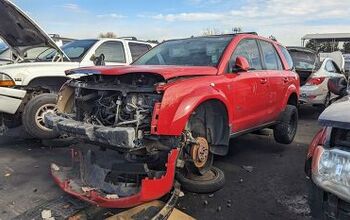Auto Industry Insanity, Defined
Edmunds AutoObserver Michelle Krebs, commenting on the termination and replacement of Cadillac’s leadership, concluded, “ If GM is going to change and is going to succeed, it must change people.” Paraphrasing Eistein, she added that “Doing the same thing over and over again with the same people in the same positions and expecting a different result is…insane.”
Michelle Krebs is far from the first to suggest that, to survive, a struggling company must replace the executives that oversaw its decline. And she won’t be the last. But this is a superficial solution that, without additional measures, will surely fail.
A key reason for the popularity of this solution is that it’s easy to observe and easy to comprehend. But it’s based on a very shaky assumption: if an executive didn’t achieve the desired result, then that executive either lacked ability or lacked the proper intent. The latter is addressed through demands for “accountability,” which Krebs also suggests.
But what if these are good, talented people placed in an unwinnable situation? What if the structure and culture of the organization prevent them from doing what they know should be done, and would otherwise do?
This has very much been the case within General Motors. I essentially lived within the GM organization for over a year back in the late 1990s, observing it as an anthropologist would. I encountered, over and over, people who knew the right thing to do, and who wanted to do the right thing, but who were unable to do it because GM’s structure and modes of operation placed endless barriers in their way. As a result, the predominating mood within the organization was one of frustration.
Putting different people in the same organization and expecting a different result is insane.
Actually, the outcome could well be different–but worse. Developing and building cars in an intensely collaborative exercise. For people to do well within it they must both be experts at what they do and know those they work with very well. Place an expert among strangers, and they will likely discredit and ignore his or her suggestions. You cannot really know who knows what they’re talking about by listening to them for the first time. Knowledge of the extent of others’ knowledge, especially if they’re in a different field than you are, can often only be gained through repeatedly working together.
Bring in new people, and they will know neither their new jobs nor the expertise of those they must work with. This is proven recipe for either indecision or, when the pressure for results is intense, bad decisions. GM and many other companies have gone through this cycle over and over. While GM hasn’t often fired executives outright, as they did in this case, they’ve switched people around many times before, but rarely with the intended results.
Now, perhaps GM’s new leaders aren’t merely changing people. Perhaps they’re also making fundamental changes to the way the organization is structured and the way it operates. Maybe these changes simply aren’t being reported in the press because they are much more difficult to comprehend and communicate than personnel changes. Maybe they’re even the right structural and cultural changes. If so, then changing people might be necessary to keep the new organization from reverting to the old one. As one piece within a much larger solution, personnel changes might make sense.
But, if they’re the entire solution, personnel changes are bound to fail. To repeat: putting different people in the same organization and expecting a different result is insane.
The suggestions I offered to GM nearly a decade ago:
Executive summary of report to GM
Michael Karesh owns and operates TrueDelta, an online source of auto pricing and reliability data
Michael Karesh lives in West Bloomfield, Michigan, with his wife and three children. In 2003 he received a Ph.D. from the University of Chicago. While in Chicago he worked at the National Opinion Research Center, a leader in the field of survey research. For his doctoral thesis, he spent a year-and-a-half inside an automaker studying how and how well it understood consumers when developing new products. While pursuing the degree he taught consumer behavior and product development at Oakland University. Since 1999, he has contributed auto reviews to Epinions, where he is currently one of two people in charge of the autos section. Since earning the degree he has continued to care for his children (school, gymnastics, tae-kwan-do...) and write reviews for Epinions and, more recently, The Truth About Cars while developing TrueDelta, a vehicle reliability and price comparison site.
More by Michael Karesh
Latest Car Reviews
Read moreLatest Product Reviews
Read moreRecent Comments
- Corey Lewis It's not competitive against others in the class, as my review discussed. https://www.thetruthaboutcars.com/cars/chevrolet/rental-review-the-2023-chevrolet-malibu-last-domestic-midsize-standing-44502760
- Turbo Is Black Magic My wife had one of these back in 06, did a ton of work to it… supercharger, full exhaust, full suspension.. it was a blast to drive even though it was still hilariously slow. Great for drive in nights, open the hatch fold the seats flat and just relax.Also this thing is a great example of how far we have come in crash safety even since just 2005… go look at these old crash tests now and I cringe at what a modern electric tank would do to this thing.
- MaintenanceCosts Whenever the topic of the xB comes up…Me: "The style is fun. The combination of the box shape and the aggressive detailing is very JDM."Wife: "Those are ghetto."Me: "They're smaller than a Corolla outside and have the space of a RAV4 inside."Wife: "Those are ghetto."Me: "They're kind of fun to drive with a stick."Wife: "Those are ghetto."It's one of a few cars (including its fellow box, the Ford Flex) on which we will just never see eye to eye.
- Oberkanone The alternative is a more expensive SUV. Yes, it will be missed.
- Ajla I did like this one.


































Comments
Join the conversation
My goodness, where did you get a pic of the GM mural on the bus depot in downtown Oshawa? I was involved in its installation, and drive by every day. Stupid when it went in, and terribly outdated now.
He's a man out of time who ruined his own reputation, but I after I read this piece, I remembered Jack Welch's management theory. Correct me if I'm wrong, but I think he said top management has only three jobs. First, to promote, facilitate and enforce diffusion of knowledge. Secondly, to implement an effective system of evaluating personnel. Thirdly, to fire the weakest-performing ten percentile. When your job is so transparent, it doesn't matter if you're an insider or an outsider. And if you do it right, it turns your organisation into a meritocracy. GM's bosses probably didn't really care about promoting the best people; in any case, they couldn't tell the difference. Mulally can.